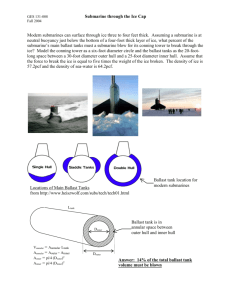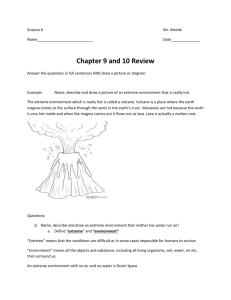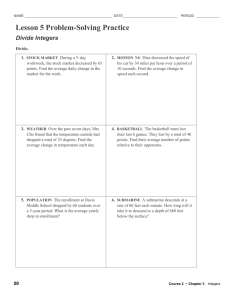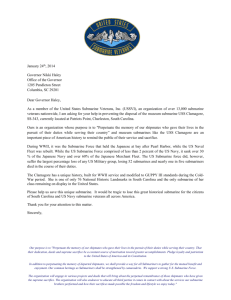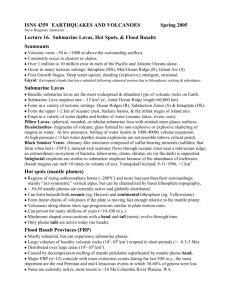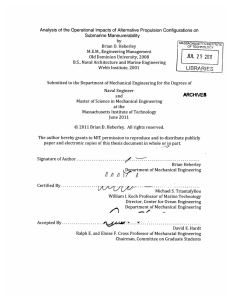Ballast Boys Emergency Main Ballast Tank Test Model Submarine
advertisement
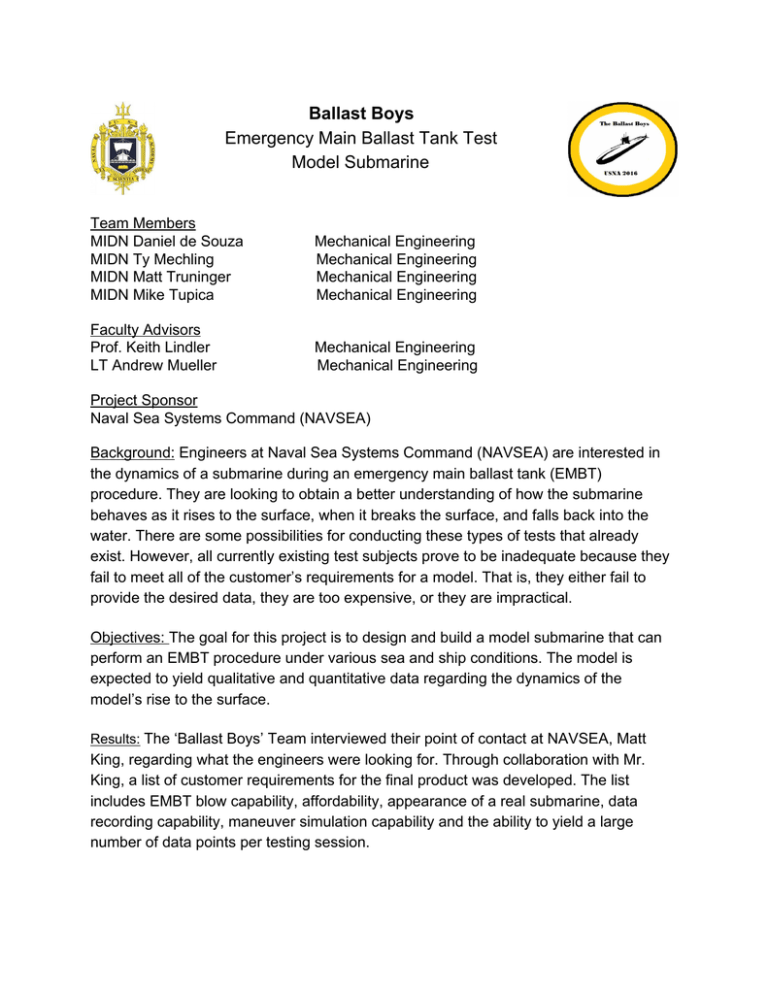
Ballast Boys Emergency Main Ballast Tank Test Model Submarine Team Members MIDN Daniel de Souza Mechanical Engineering MIDN Ty Mechling Mechanical Engineering MIDN Matt Truninger Mechanical Engineering MIDN Mike Tupica Mechanical Engineering Faculty Advisors Prof. Keith Lindler Mechanical Engineering LT Andrew Mueller Mechanical Engineering Project Sponsor Naval Sea Systems Command (NAVSEA) Background: Engineers at Naval Sea Systems Command (NAVSEA) are interested in the dynamics of a submarine during an emergency main ballast tank (EMBT) procedure. They are looking to obtain a better understanding of how the submarine behaves as it rises to the surface, when it breaks the surface, and falls back into the water. There are some possibilities for conducting these types of tests that already exist. However, all currently existing test subjects prove to be inadequate because they fail to meet all of the customer’s requirements for a model. That is, they either fail to provide the desired data, they are too expensive, or they are impractical. Objectives: The goal for this project is to design and build a model submarine that can perform an EMBT procedure under various sea and ship conditions. The model is expected to yield qualitative and quantitative data regarding the dynamics of the model’s rise to the surface. Results: The ‘Ballast Boys’ Team interviewed their point of contact at NAVSEA, Matt King, regarding what the engineers were looking for. Through collaboration with Mr. King, a list of customer requirements for the final product was developed. The list includes EMBT blow capability, affordability, appearance of a real submarine, data recording capability, maneuver simulation capability and the ability to yield a large number of data points per testing session. The team produced a number of possibilities for design options and chose one based on a weighted design matrix for detail development and production. The chosen design includes a previously constructed model submarine hull that will be altered to adhere to customer requirements and constraints. In addition to the submarine model itself, a release mechanism subsystem will be constructed using the Technical Support Department and the machine shop. Deliverables include a 1/60th scale submarine model which can mimic the dynamics of a full size submarine during an emergency ballast tank procedure. A report detailing the specifics of the model will also be produced. Figure 1: Ballast Boys Model Submarine Design Figure 2: Previously Constructed Model Submarine Hull Figure 3: The Ballast Boys Team
